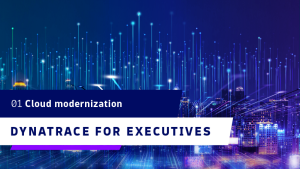More than 95% of Fortune 500 companies use Microsoft Azure. Azure provides a wide variety of cloud services with globally distributed applications. Running containers in the cloud is also a very popular use case for Azure. Because all these resources generate huge amounts of data in various locations, it makes it difficult to monitor. These challenges make Azure observability critical for building and monitoring cloud-native applications.
Observability in the cloud can be hard to achieve. There is increasing complexity when it comes to scaling hybrid, multicloud environments. Because the number of dependencies rapidly increases, lack of visibility becomes a major pain point. This is especially true when it comes to identifying root causes to remediate large-scale incidences quickly.
Observability means how well you can understand what is happening in a system by collecting metrics, logs, and traces. Observability is so important because it is the crux of monitoring and goes beyond IT as it safeguards consumer and business expectations are met.
Let’s dive into what Azure observability means and why it matters.
What is Azure observability?
Microsoft provides guidance to accelerate cloud adoption with The Cloud Adoption Framework. By using Cloud Adoption Framework best practices, organizations are better able to align their business and technical strategies to ensure success.
One of the key monitoring strategies in the Cloud Adoption Framework is observability. Microsoft believes observability enables monitoring. Once you achieve initial observability, you can develop actionable alerts, create useful dashboards, and evaluate AIOps solutions. This allows you to get comfortable with all the underlying metrics and log data.
Why Azure observability matters
As organizations adopt more cloud-native technologies, infrastructure and application monitoring can get complex. When it comes to Microsoft Azure, it’s about understanding the application workloads and Azure infrastructure. When you have visibility into the Azure infrastructure, you can troubleshoot more effectively to ensure that critical applications are functioning optimally.
This visibility also ensures there are no performance issues with customer-facing transactions or internal applications critical to your business. You can’t monitor what you don’t know. Accordingly, awareness of the full technology stack requires observability of applications, their services, and transactions down to the code level. Observability of Azure infrastructure and all the services it supports helps you pinpoint performance issues and eliminate guesswork.
Best in class observability for Microsoft Azure—and beyond
As organizations shift to hybrid cloud environments, Microsoft Azure adoption rates have been skyrocketing. For most organizations, Azure infrastructure is a critical part of a wider IT infrastructure. Driving innovation to ensure that services are always available and running optimally requires observability that extends beyond the Azure infrastructure into the full IT stack.
With AI at its core, the Dynatrace platform unifies application and infrastructure monitoring across all your IT operations infrastructure. As a result, Dynatrace simplifies cloud operations, automates DevSecOps, and integrates with all major cloud platforms and technologies. With a single source of observability intelligence, teams can optimize CI/CD pipelines, deliver on performance and application security objectives, and focus on improving digital experiences for their users.
Dynatrace is a Microsoft gold partner and Cloud Platform competency holder. The Dynatrace platform is generally available as a SaaS solution on Azure providing automated cloud observability. Through auto-instrumentation, Dynatrace supports end-to-end tracing for Azure functions and brings value by enriching the data from Azure Monitor and Application Insights. By extending Azure observability into the platform with additional metrics for cloud infrastructure, Dynatrace integrates Azure infrastructure with load balancers, API Management Services, and more. This extended observability improves operations, reduces MTTR, and increases innovation.
To learn more about how Dynatrace enables Azure observability, join us for the on-demand webinar, Transform Faster with Dynatrace Observability into Azure Environments.





Looking for answers?
Start a new discussion or ask for help in our Q&A forum.
Go to forum